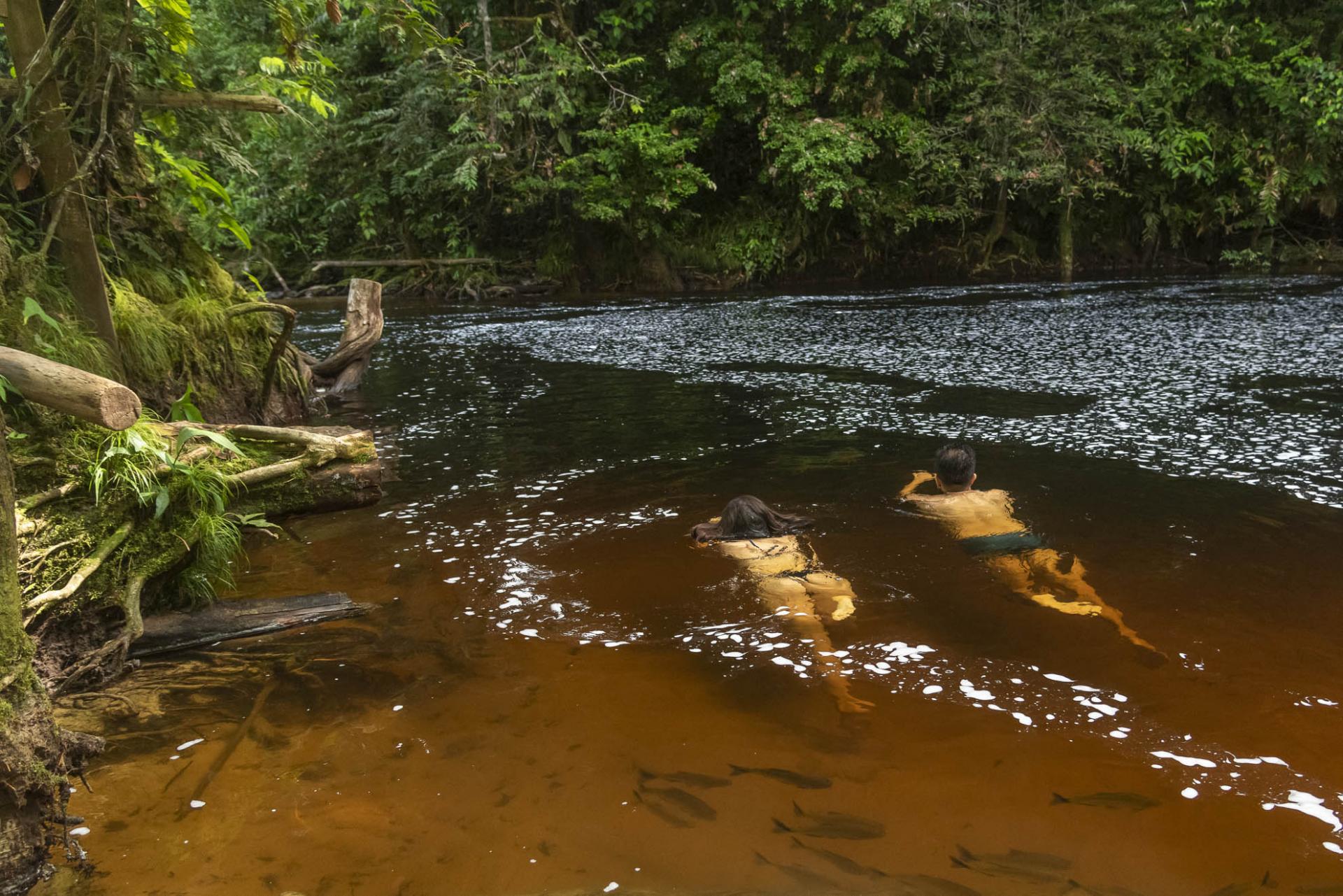Jaú National Park

Jaú National Park, the “Parque Nacional do Jaú”, with an area of 9,140.35 square miles, is the second largest national park in Brazil after Montanhas do Tumucumaque. It is located on the Rio Negro in the state of Amazonas, a little more than 124 miles northwest of Manaus in the Amazon Basin. Named after the Rio Jaú, a tributary of the Amazon River, the reserve was established on September 24, 1980 and declared a World Heritage Site by UNESCO in 2000. In 2003, it was expanded to a total area of more than 20,077.31 square miles and declared “Complexo de Conservação da Amazônia Central”, “Central Amazon Nature Reserve”.
If you want to experience a nature adventure during your Brazil vacation, be sure to visit Jaú National Park!
Great natural wealth
Jaú National Park is the fourth largest forest reserve in Brazil and the third largest park of intact tropical rainforest in the world.
Managed by the Chico Mendes Institute for Conservation of Biodiversity, the park is an important example for Amazon ecosystems. Jaú National Park was named after one of the rivers that flow through the area, Rio Jaú, one of the many tributaries of the great Rio Negro and also its main tributary.
The lushness of the tropical rainforest and the largest lake in Amazonia, the Amaná, are the highlights of Jaú National Park. The area has an incredible number of plant species and is covered with dense tropical forest interspersed with more open sections.
Jaú National Park is ideal for hiking, canoeing, and boat expeditions.
Rich diversity
One of the characteristics of the Jaú River is its dark water, produced by the decomposition of organic matter. In Jaú National Park, crossed by the Negro, Jaú, Carabinani, Unini, Pauini, and Canauaru rivers, there are several waterfalls of incomparable beauty and the largest black water basin in the world, the Rio Negro. The dark color of the water comes from springs that rise from very old soils, enriching the rivers with organic elements and iron.
According to biological studies, there are about 400 plant species in this area, some of which are found only in certain regions. The rich tropical biodiversity includes examples for the ecosystems várzea, igapó, forest, lake, and canal. Species such as açaizeiro, macaricuia, and igapé macucu live along riverbanks and are also found in occasionally flooded areas. Shrubs such as amapá-doce, jarana, and mangarana grow in the higher areas. Brazil nut trees, maçarandubas, angelin rajados, and sucupiras are some of the species found in the denser tropical forest area.
In addition to the typical flora of the Amazon, researchers have also discovered a rich and diverse fauna. Jaú National Park is home to the largest variety of electric fish in the world, included in the list of 263 fish species that have already been cataloged within its boundaries. Many endangered species are also found here, including the arapaima-gigante, the amazon cow, the caiman, the jacaré-açú, the jacaretinga, the Amazon turtle, and the tracará.
Jaú National Park is also home to individual waterfalls such as the Miratucu and various beaches that have been created on the banks of the Jaú River. Since there has been no permanent human settlement by miners or loggers, the ecosystem has preserved all its original features. In the park, about 160 families live on the banks of the river, living for many generations from fishing, cultivation of cassava, and the collection of fruits and lianas.
Experience nature
To experience Jaú National Park, it is usually most practical to start from Manaus. There are many different ways to explore the park. The most common however is a boat expedition. Amazon cabin boats or canoes through the flooded igapó forests are examples for boat expeditions in Jaú National Park. Another experience is a hike through the terra firme forest. Within the park, at appropriate times, the most beautiful regions of the mostly flooded parts can be approached, boasting rock engravings, animal observations, and a very dense and diverse flora. In addition, you might visit small indigenous tribes by boat expedition in Jaú National Park. Besides the central experience of the park, there are other attractions such as the Anavilhanas Archipelago, an island complex consisting of 400 islands. This attraction can also be visited by boat expedition.
There are no lodges in Jaú National Park, so it is best to visit the park with a tour operator. Due to the many options of traveling by canoes, small boats, and ships, it is usually most exciting to experience the trip by boat expedition. Preregistration is essential, as the tour operator must obtain a special permission allowing you to enter the park.
Many options to choose from
Jaú National Park offers the most diverse insights into the Amazon, in addition to its great biodiversity and the many rivers. Thus, there is an enormous range of natural attractions to marvel at during a trip to Jaú National Park. You can draw on a whole range of options for your own Brazil trip to suit your preferences. Whether aboard an Amazon cabin cruiser, gliding through the flooded forest in canoes, or hiking on solid ground, the untamed wilderness of Jaú National Park will deeply touch you!
Sources: www.amazon-travel-brazil.com, www.brasilienportal.ch, www.scte-brasilien.de, www.wikipedia.org

